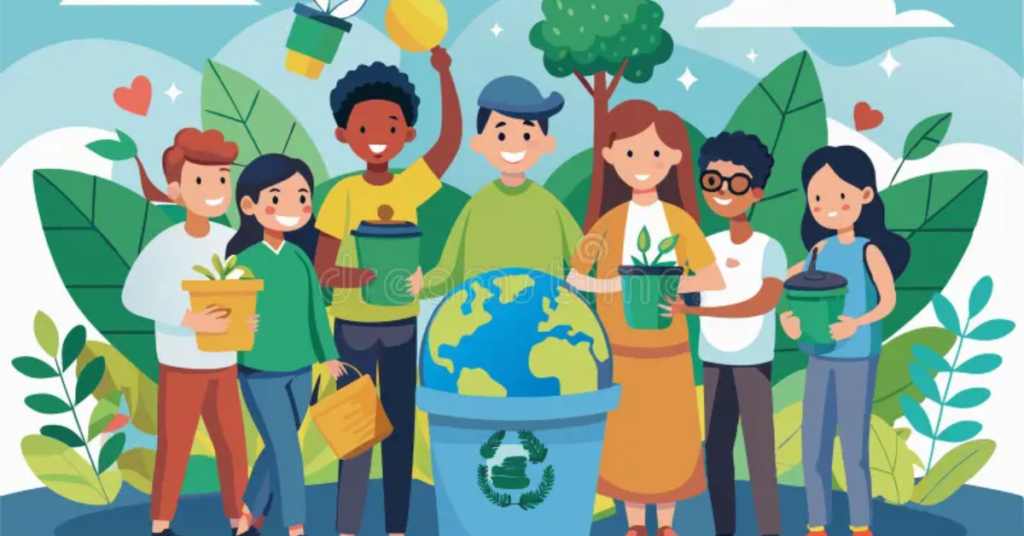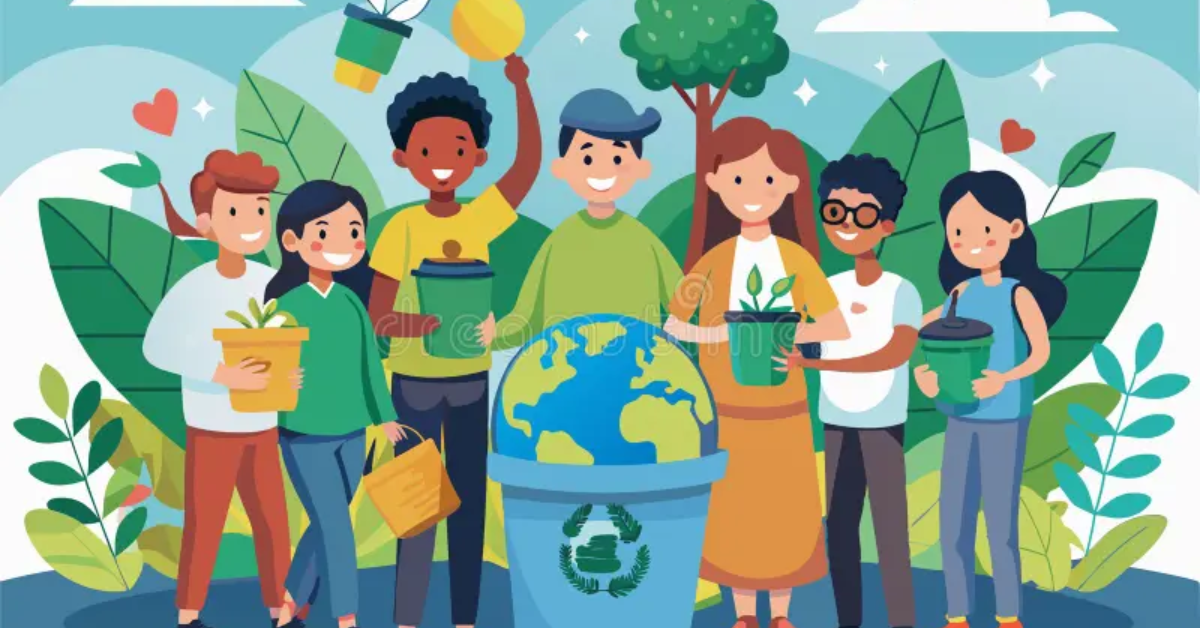In recent years, student environmental activism has emerged as a powerful movement, uniting young people across the globe to advocate for sustainability, climate justice, and the protection of natural resources. Fueled by a growing awareness of environmental issues and a sense of urgency about the future, students are stepping up to challenge the status quo, demanding action from governments, institutions, and corporations. This article delves into the significance of student environmental activism, explores its various forms, and highlights the impact that this generation is making in the fight for a sustainable future.

The Rise of Student Environmental Activism
The modern environmental movement has deep roots, but its resurgence in recent years can largely be attributed to the rise of digital technology and social media. Platforms like Twitter, Instagram, and TikTok have enabled students to share their messages widely, organize events, and connect with like-minded individuals across the globe. Additionally, high-profile events, such as the global climate strikes inspired by Greta Thunberg, have galvanized student activism, sparking millions to take to the streets and demand urgent action on climate change.
A Historical Perspective
Student activism has a long history, dating back to the 1960s, when young people rallied against the Vietnam War and fought for civil rights. The environmental movement gained momentum in the 1970s with the first Earth Day in 1970, which saw millions participating in events advocating for environmental protection. However, the urgency of contemporary environmental challenges, such as climate change, plastic pollution, and biodiversity loss, has necessitated a renewed and more vigorous approach.
The Role of Education in Activism
Educational institutions play a critical role in fostering environmental activism among students. Many universities and colleges are integrating sustainability into their curricula, promoting awareness of environmental issues, and encouraging students to engage in activism. This educational foundation empowers students to think critically about their impact on the environment and inspires them to take action.
Forms of Student Environmental Activism
Student environmental activism manifests in various forms, from peaceful protests and awareness campaigns to innovative solutions and policy advocacy. Here are some of the most common methods through which students are making their voices heard:
1. Climate Strikes and Protests
One of the most visible forms of student activism is climate strikes and protests. These events often attract large crowds and serve to draw attention to the urgent need for climate action. Students organize strikes, walkouts, and demonstrations, demanding that governments take meaningful steps to address climate change and its impacts. The Fridays for Future movement, initiated by Greta Thunberg, has mobilized millions of students worldwide, demonstrating the power of collective action.
2. Campus Sustainability Initiatives
Many students are taking action on their own campuses by initiating sustainability projects. These initiatives can range from advocating for renewable energy sources and reducing waste to creating community gardens and promoting recycling programs. By implementing sustainable practices at the campus level, students not only reduce their ecological footprint but also inspire their peers to adopt more environmentally friendly behaviors.
3. Advocacy and Policy Change
Students are increasingly engaging in advocacy efforts aimed at influencing policy change at local, national, and international levels. They organize letter-writing campaigns, meet with legislators, and participate in lobbying efforts to promote environmental policies that align with their values. By advocating for policies such as the Green New Deal or local sustainability initiatives, students are working to ensure that environmental considerations are integrated into decision-making processes.
4. Digital Activism
In the age of technology, digital activism has become a powerful tool for students to amplify their voices. Social media campaigns, online petitions, and virtual events allow students to reach a broader audience and mobilize support for their causes. Hashtags like #ClimateStrike and #FridaysForFuture have garnered global attention, facilitating conversations around climate action and sustainability.
5. Collaboration with NGOs and Community Organizations
Many students partner with non-governmental organizations (NGOs) and community groups to advance their environmental goals. These collaborations can involve organizing workshops, participating in awareness campaigns, or volunteering for local conservation projects. By working with established organizations, students can leverage resources and expertise, enhancing the impact of their activism.
The Impact of Student Environmental Activism
The influence of student environmental activism is significant and far-reaching. As this generation raises its voice, it is shaping public discourse around environmental issues and pushing for systemic change. Here are some of the key impacts of this movement:
1. Raising Awareness
Student activists play a crucial role in raising awareness about environmental issues. Their efforts help educate peers, community members, and the public about the urgency of climate change and the importance of sustainability. Through campaigns and events, students shed light on critical topics such as climate justice, biodiversity loss, and pollution, fostering a more informed and engaged citizenry.
2. Driving Policy Change
The collective power of student activism has led to tangible policy changes at various levels of government. By organizing campaigns and advocating for sustainable practices, students have successfully influenced legislation related to renewable energy, waste reduction, and climate action. For instance, student-led initiatives have prompted universities to commit to carbon neutrality and invest in sustainable infrastructure.
3. Inspiring Future Generations
Student environmental activism serves as an inspiration for future generations. The passion and commitment demonstrated by young activists motivate others to join the movement and take action. As students share their stories and experiences, they create a ripple effect, encouraging peers to become advocates for environmental justice and sustainability.
4. Fostering a Culture of Sustainability
Through their efforts, students are fostering a culture of sustainability within their communities and institutions. By promoting environmentally friendly practices and advocating for sustainable policies, they are encouraging a shift in societal values toward prioritizing the health of the planet. This cultural change is essential for addressing the systemic issues contributing to environmental degradation.
Challenges Faced by Student Activists
Despite their determination and commitment, student environmental activists encounter several challenges in their pursuit of change:
1. Institutional Barriers
Many students face resistance from educational institutions and governmental bodies that may prioritize short-term gains over long-term sustainability. Bureaucratic hurdles can hinder the implementation of sustainable initiatives, and students often find themselves having to navigate complex systems to effect change.
2. Limited Resources
Student activists frequently operate with limited resources, relying on volunteers and grassroots efforts to mobilize their campaigns. This lack of funding and support can impede their ability to reach larger audiences and implement more significant projects.
3. Climate Anxiety
The weight of the climate crisis can lead to feelings of anxiety and hopelessness among students. Many activists experience burnout from the continuous struggle for change, which can affect their mental health and motivation to continue their efforts.
Conclusion
Student environmental activism is a powerful force for change, driven by the urgency of our planet’s ecological crises. As young people increasingly recognize their role in shaping a sustainable future, their collective efforts are making a profound impact on communities, policies, and the broader discourse surrounding environmental issues. By advocating for change, raising awareness, and fostering a culture of sustainability, students are not only addressing the challenges of today but also paving the way for a more resilient and equitable tomorrow.
The future of our planet lies in the hands of the next generation, and student environmental activism is proving that young voices can drive the critical change needed to safeguard the Earth for generations to come. As we witness this remarkable movement unfold, it is clear that the passion, creativity, and commitment of students will be instrumental in shaping a sustainable future for all.
